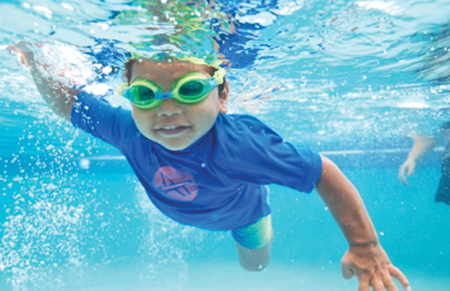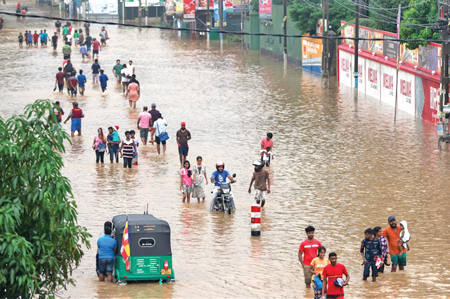 A heartbreaking tragedy unfolded in Mahiyanganaya last Sunday (July 20) when a young couple walking along the Viyana canal was swept into the water. The young man fell in first, and his girlfriend, in a desperate attempt to save him, reached out, only for both to be pulled under by the strong current. While passers-by managed to rescue the young man, the young woman, a 26-year-old student of Rajarata University, was not so lucky. Her body was recovered the following day.
A heartbreaking tragedy unfolded in Mahiyanganaya last Sunday (July 20) when a young couple walking along the Viyana canal was swept into the water. The young man fell in first, and his girlfriend, in a desperate attempt to save him, reached out, only for both to be pulled under by the strong current. While passers-by managed to rescue the young man, the young woman, a 26-year-old student of Rajarata University, was not so lucky. Her body was recovered the following day.
In a separate incident just weeks earlier, four individuals from Ratmalana drowned while bathing in the Ellewewa reservoir in Polonnaruwa. They had travelled to visit relatives and decided to take a swim, unaware of the danger. None of them made it out alive.
Such stories are sadly not rare in our country. As an island nation with countless natural water bodies, from canals and rivers to reservoirs and the ocean, water is part of everyday life, but with it comes risk. According to local data, nearly 800 people drown in Sri Lanka each year. Many are young, most are healthy, and almost all of these deaths are preventable.
From sudden currents to unexpected water depths, unfamiliar terrain, or simply overestimating one’s swimming ability, the causes of drowning are many. A moment of misjudgement, a lack of safety precautions, or simply being in the wrong place at the wrong time can turn a joyful outing into a tragedy.
With World Drowning Prevention Day observed on July 25, now is the time to take a closer look at why drowning remains a serious concern and what can be done to address it.
Local trends
“Sri Lanka’s location as an island surrounded by the sea makes it a popular destination for both local and foreign travellers who are drawn to its beaches. Being a tropical country with hot weather all year round, people often take part in water-related activities. Sri Lanka is also rich in natural water resources such as rivers, ponds, and waterfalls. Over the past few decades, the growing number of resorts and hotels offering swimming pools and water activities has further increased public exposure to water.

Swimming is an essential life skill
“Situated in the Indian Ocean, the country faces two annual monsoons. Flooding is a common result, especially in the Central, Western, and Southern parts of the country, usually caused by overflowing rivers. Human activities such as deforestation and filling of wetlands have worsened the situation. Due to all facts mentioned above, people in Sri Lanka face a higher risk of drowning,” a report by the Health Ministry Epidemiology Unit stated.
Drowning is a leading cause of accidental death by injury in Sri Lanka, ranking the third highest across all age groups (road accidents ranked first and falls ranked second) on average from 2004-2014, according to the ‘Drowning Prevention Report 2020’ by Sri Lanka Lifesaving. However, it was the leading cause of accidental injury death among children aged 1-14 years.
According to the same report, an average of 3.5 people per 100,000 died from drowning each year between 2016 and 2018. The Northern Province had the highest rate, with 7.3 drowning deaths per 100,000 people.
Nationally, lakes and similar waterways were the top locations for drowning incidents accounting for 26 percent of all deaths. This was followed by canals, the sea, wells and rivers.
Hidden dangers
Many drowning incidents happen due to poor swimming skills, carelessness, alcohol use, medical issues like epilepsy, or a lack of water safety knowledge. Natural dangers such as strong currents, rip tides, and changing weather can quickly turn seemingly safe waters deadly.
In many cases, the victims are unfamiliar with the hidden dangers such as sudden drops, strong currents, or changing water levels in the area where they swim or bathe. Asking locals about the water’s safety can help prevent tragedy.
Rip currents are particularly dangerous. They form when waves push water to the shore and it rushes back out through narrow channels. Trying to swim against the current can lead to exhaustion and drowning. Instead, swim sideways to escape the current, and let the waves bring you back in. Everyone who visits the beach should know this lifesaving tip.
There have been many sad cases where someone tries to save a drowning person but ends up drowning themselves. Even if the rescuer can swim, without proper training, things can quickly go wrong.
Always think safety first before jumping in. Try safer ways to help, like throwing a rope, using something that floats, or forming a human chain with others.
According to the World Health Organization (WHO), around 300,000 people die from drowning each year worldwide. Children under five years account for nearly a quarter of these deaths. Drowning death rates are more than three times higher in low- and middle-income countries than in high-income countries.
Keep an eye on children
Early this year, there was a report of a 19-month-old baby who drowned after falling into a pond at home, as reported by Wadduwa Police. The child had been playing outside while the parents were inside the house. This heartbreaking loss serves as a stark reminder that drowning is not limited to oceans or rivers, but that it can happen in the very places we consider safe.
A curious toddler may approach an unprotected well, notice their reflection, and attempt to make contact. Domestic drowning is an often-overlooked threat, particularly to infants and toddlers, with fatalities reported in bathtubs, buckets, garden ponds, wells, septic tanks, and even toilets.

Frequent floods increase drowning risks
Always keep an eye on young children near water. Swimming lessons that include basic safety skills can make a big difference, especially for school-aged children. These lessons should always be done in a safe and supervised setting.
Warning displays, fencing in high-risk areas near lakesides and covering wells can reduce exposure to water hazards.
To prevent drowning, it is important to have clear rules such as banning alcohol for boat operators and stopping people from swimming in dangerous areas, said the Epidemiology Unit. All water activity zones should have basic safety in place, such as trained lifeguards, life jackets, lifebuoys, and emergency medical help, the unit’s report said.
“Setting legislation and regulations, like ferry regulations, is important for water safety. Disaster preparedness plans for floods such as land use regulations, building resilience for flooding, early warning systems and early response can reduce the effects of flood disasters including drowning related injuries and deaths,” the report added.
****
Key prevention tips
* Learn to swim: Equip yourself and your children with swimming skills. Swimming lessons save lives.
* Supervise children: Always keep a close eye on children near water. Never leave children unattended, even for a moment.
* No alcohol near water: Avoid drinking alcohol when around water. Stay sharp and vigilant.
* Be aware of surroundings: Always check weather and water conditions before swimming or boating. Stay informed and safe.
* Use safety equipment: Ensure lifejackets are available and used correctly when boating. Access to safety gear can make a crucial difference.
(Source: WHO)









